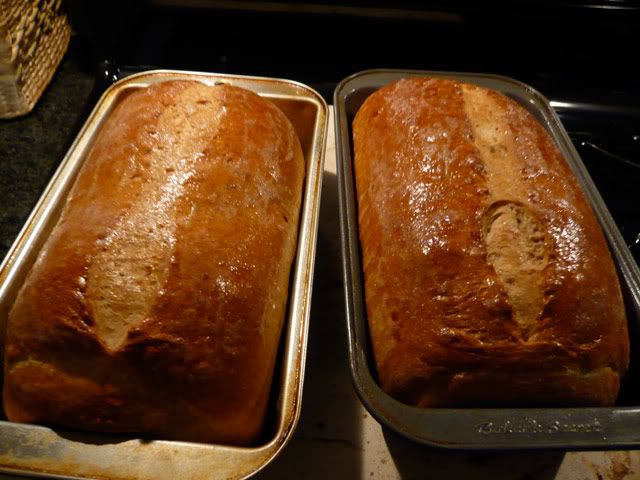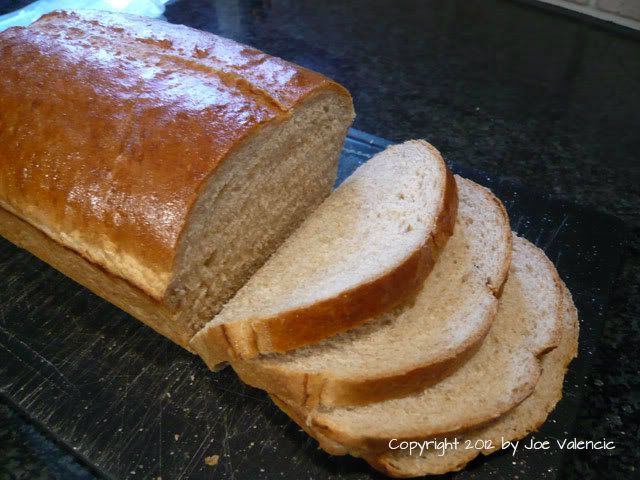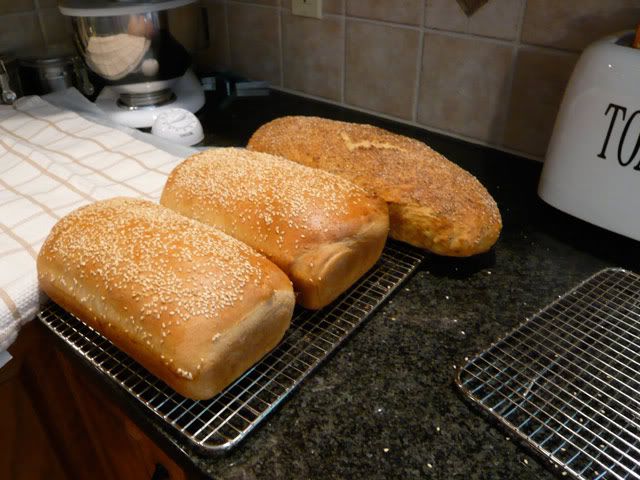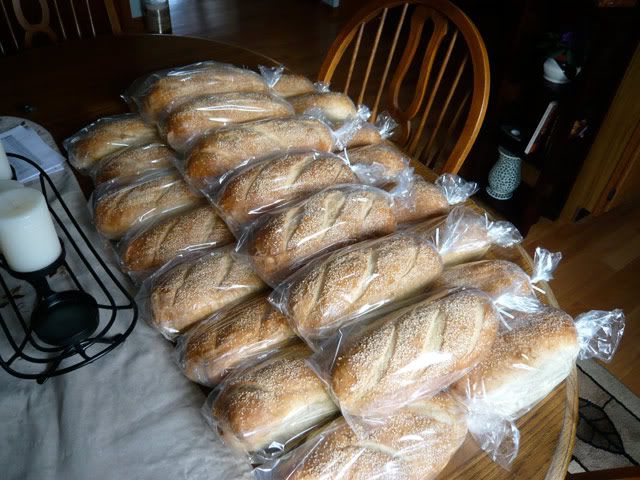Here is the recipe I found on the Bob's Redmill Website...
[FONT=Arial, Helvetica, sans-serif]
Semolina Bread by Hand [/FONT]
[FONT=Times New Roman, Times, serif] [/FONT]
[FONT=Arial, Helvetica, sans-serif] [/FONT]
[FONT=Arial, Helvetica, sans-serif]
INGREDIENTS:
2 tb
Cornmeal, Coarse Grind 2 tb
Sesame Seeds (White Hulled) The Dough:3 tb Sugar 3 tb Olive Oil 2 to 3 cups
White Flour, Unbleached 1 tb
Sea Salt The Sponge:2 cups Warm Water (110 - 115 degrees F) 2 tb
Yeast, Active Dry 3 cups
Semolina [/FONT]
[FONT=Arial, Helvetica, sans-serif] For The Sponge: In a large bowl sprinkle the yeast over the warm water; stir to dissolve. Add the flour and stir until smooth. Cover and let stand in a warm spot until doubled in volume (30 to 45 minutes).
For the Dough: Stir down the sponge, then add the sugar, olive oil, 2 cups flour, and salt. Mix until the dough comes away form the sides of the bowl.
Turn the dough out onto a floured board and knead, adding more flour, 1/4 cup at a time if the dough is sticky. Continue kneading vigorously until the dough feels smooth and elastic (10 to 12 minutes). The dough should push back when pressed down.
Transfer the dough to an oiled bowl and turn to coat. Cover and allow to rise until doubled in volume (35 to 45 minutes). Punch down, then cut the dough in half, shape into rounds, and cover. Allow to rest for 10 minutes.
Shaping: Form into 2 Italian-shaped loaves, about 18" long. Place the loaves on a baking sheet that has been dusted with coarse cornmeal.
Proofing: Cover with a cloth and allow to rise until doubled in size (45 to 60 minutes). Brush the tops with water and sprinkle with sesame seeds if desired. When the bread has proofed, cut 3 diagonal slashes with a sharp knife or single-edged razor blade. Hold the knife at an angle to the bread and try to cut inside and underneath the crust. This will cause the bread to break open, or bloom, while baking and form a thick, crunchy crust.
Baking: Bake with steam* in a preheated 400�F oven until browned and the bread sounds hollow when tapped on the bottom with your fingertips (35 to 45 minutes). If baking on an oven stone or tiles, the bread can be removed from the baking pan for the last 10 minutes to firm up the crust.
Makes 2 loaves (13 slices each).
*Note: Steaming can be achieved by filling a baking pan with ~1" of water and placing it in the oven on the rack below the bread.[/FONT]





